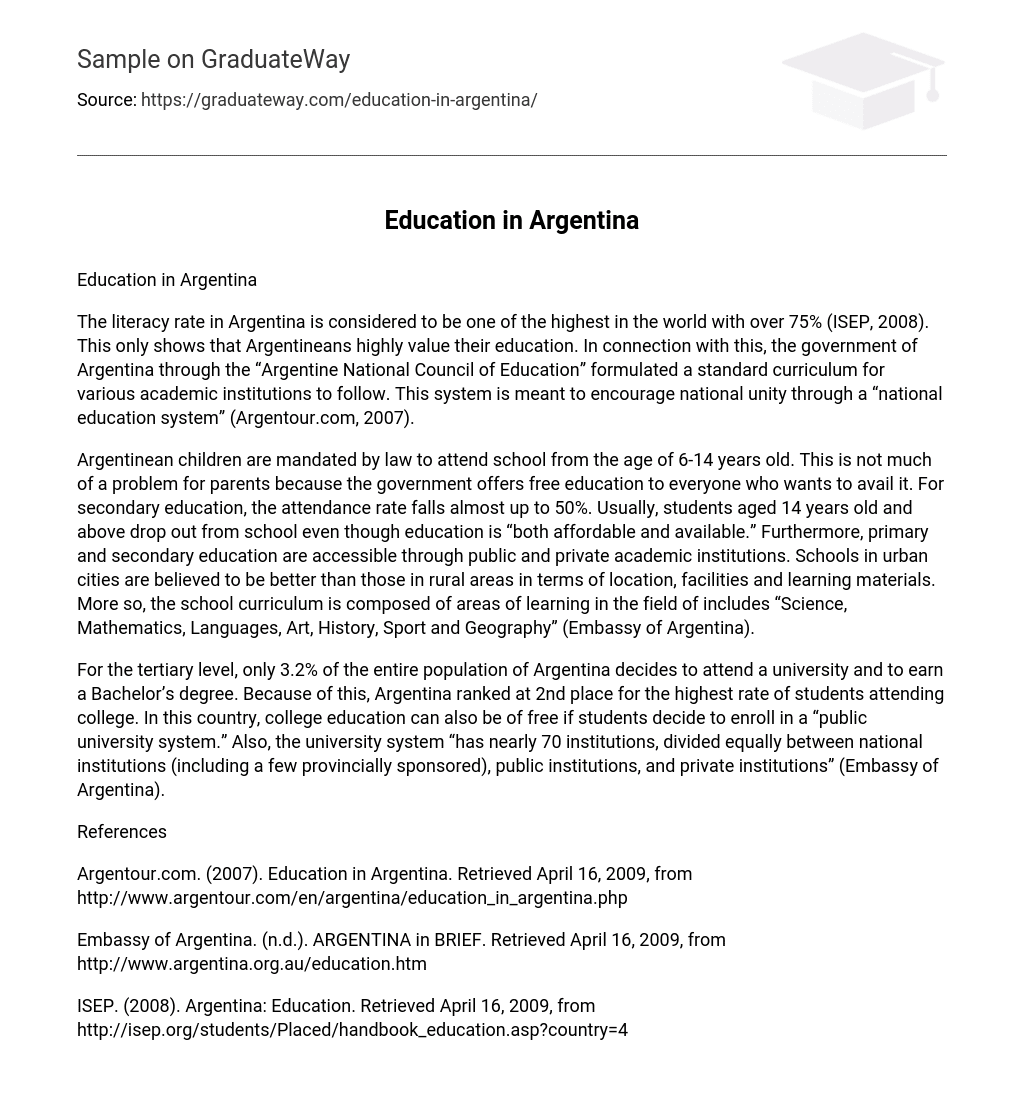The literacy rate in Argentina is considered to be one of the highest in the world with over 75% (ISEP, 2008). This only shows that Argentineans highly value their education. In connection with this, the government of Argentina through the “Argentine National Council of Education” formulated a standard curriculum for various academic institutions to follow. This system is meant to encourage national unity through a “national education system” (Argentour.com, 2007).
Argentinean children are mandated by law to attend school from the age of 6-14 years old. This is not much of a problem for parents because the government offers free education to everyone who wants to avail it. For secondary education, the attendance rate falls almost up to 50%. Usually, students aged 14 years old and above drop out from school even though education is “both affordable and available.” Furthermore, primary and secondary education are accessible through public and private academic institutions. Schools in urban cities are believed to be better than those in rural areas in terms of location, facilities and learning materials. More so, the school curriculum is composed of areas of learning in the field of includes “Science, Mathematics, Languages, Art, History, Sport and Geography” (Embassy of Argentina).
For the tertiary level, only 3.2% of the entire population of Argentina decides to attend a university and to earn a Bachelor’s degree. Because of this, Argentina ranked at 2nd place for the highest rate of students attending college. In this country, college education can also be of free if students decide to enroll in a “public university system.” Also, the university system “has nearly 70 institutions, divided equally between national institutions (including a few provincially sponsored), public institutions, and private institutions” (Embassy of Argentina).
References
Argentour.com. (2007). Education in Argentina. Retrieved April 16, 2009, from http://www.argentour.com/en/argentina/education_in_argentina.php
Embassy of Argentina. (n.d.). ARGENTINA in BRIEF. Retrieved April 16, 2009, from http://www.argentina.org.au/education.htm
ISEP. (2008). Argentina: Education. Retrieved April 16, 2009, from http://isep.org/students/Placed/handbook_education.asp?country=4





